
How to deal with anxiety.
We all have “moments” of anxiety. But severe anxiety symptions require a thoughtful plan of action. While this doesn’nt mean you’ll have a cure for anxiety, if you have a plan of action you can quicly see benefits. So with that in mind, here are seven ways to help you releive anxiety when it starts to take control of your life.
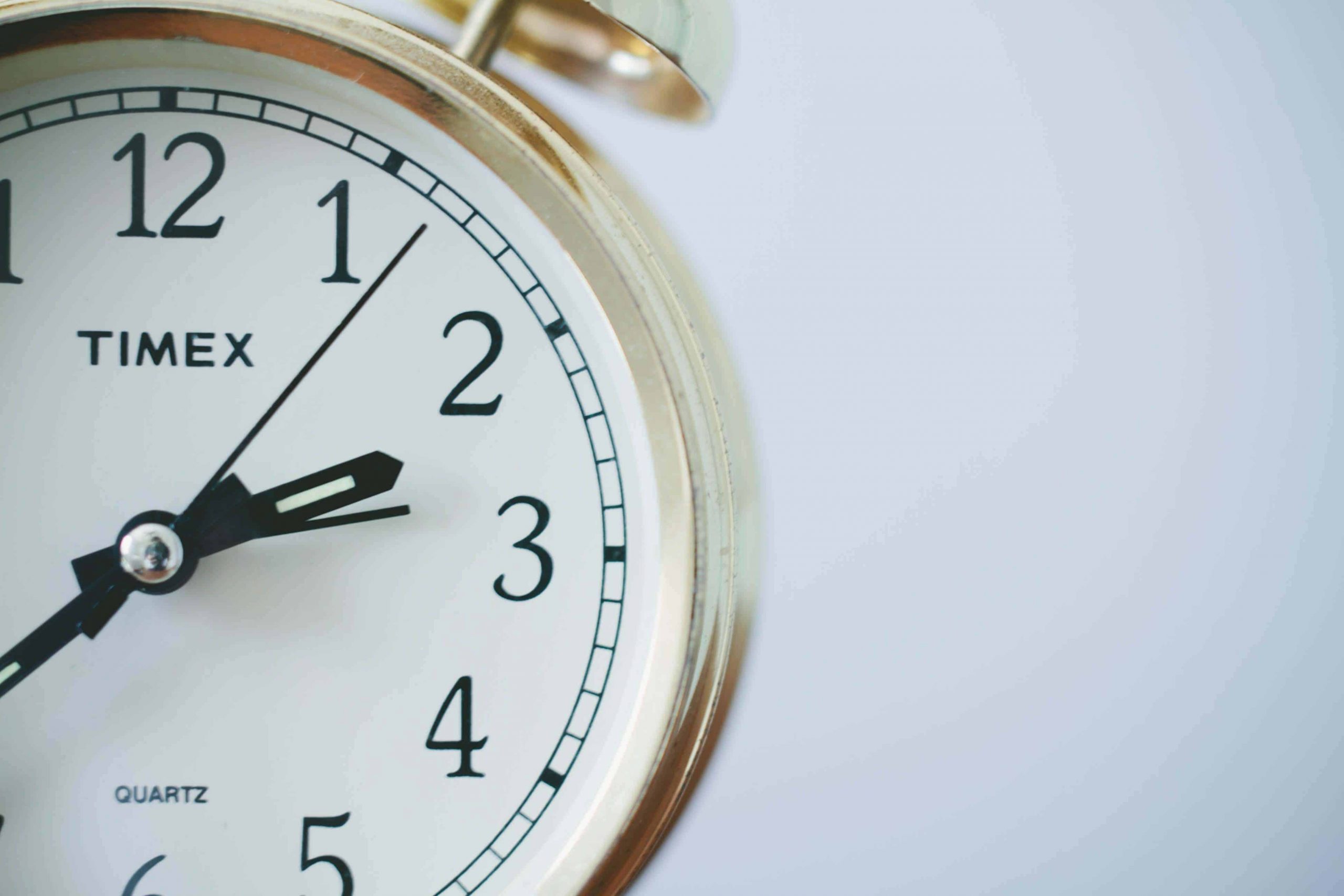
1. Slow Down to Reduce Anxiety
When we’re nervous, we do things at a much faster, more unpredictable rate. We can’t resist. It’s what our fight-or-flight reaction to stress or fear is configured to do. This comes in very handy when there’s a real emergency situation, like a fire or somebody attempting to get into your house. But we’re talking about the common everyday events that create the anxiety we must deal with each day. Such as – being late for a conference, not uncovering that elusive parking space when you’re late for doctor’s visit, listening to the kids quarreling– all things that can jack up your anxiety to new highs. To successfully alleviate these kinds of anxiety, you need to find out to slow down.
Concentrate on Your Breathing
All of us understand by now that decreasing your breathing can help manage blood circulation. Therefore, you feel calmer and more at ease. Breathing gradually informs your mind and your body that the threat is gone which means everything is at a safe level. The next time you notice your anxiety levels are increasing, focus and concentrate on your breaths. This is one of the best methods for managing stress.
Try to begin breathing more gradually. Make certain you take several deep breaths from your diaphragm. This is also called belly breathing. Keep an image of something or someone who brings happiness to your mind or a smile on your face. One thing I do is to imagine that each breath I breathe in is positive, calming energy flowing through my body. As you continue to focus on that picture in your mind and on your breathing, your heart rate will begin to slow down. Your anxiety levels will likewise drop, and your prefrontal cortex will start to engage.
Highlight Your Priorities
Given all the hectic day to day that we go through, who doesn’t multi-task? It’s the only method to get anything done, right? Nope! Multitasking is actually among some of the worst things you can do for your psychological health. Plus, you do not really get more work done– that’s simply a misconception.
Research studies reveal that multitasking decreases efficiency. But it does improve one thing: anxiety levels. To prevent all that, prepare a schedule to arrange your time. Set up jobs according to their concern to your or your team and deal with a single task at a time. When it’s done, then you can move on to the next item. Understanding what’s ahead and just focusing on that one thing will decrease anxiety. Not just that, but you’ll also develop the ability to achieve things more done at a much faster speed. Some experts call this “mono-tasking” – one single thing at a time, rather than trying to spin all those plates in the air at once.
Reserve More Time
‘What the heck does that mean?’ you’re most likely asking. And yes it’s a somewhat vague heading. But what it really means is that when you get the chance to give yourself more “breathing room” to get something done, please do so!
Here’s an example:
Let’s say you’re composing a report. You take a look at the scope and the requirements and you feel it’ll just take you an hour to get it carried out in your mind. So what you do here is to offer yourself more than an hour to finish it. That way, the difficult task of creating that report and stressing to get it done will actually turn into a more pleasurable event. So, what happens if you really do get that report done earlier than what you prepared for? Then – YAY! – You can reward yourself with a great, relaxing little break!
This ‘time cushion’ – or what I call ‘breathing room’ concept can apply to nearly any time related event that comes up. Be it job-related actions to grocery shopping to getting the kids from school, giving yourself more time cushion (breathing room) keeps you in control, helps reduce your anxiety all while cultivating an inner sense of calm and serenity.
Make Your Actions Purposeful
We automatically do everything quicker when we’re feeling nervous and stressed out. We wish to accelerate our motions to get things done faster and get it over with. While that might make good sense at first, it’s counterproductive. All it leads you to do is make errors and mishaps, which increases your anxiety a lot more.
To stop this cycle, you need to purposely focus on the actions you’re doing in order to slow down, and therefore calm down. Take a couple of additional minutes unloading the groceries. Or offer yourself more time to finish up that work task due tomorrow. Just use this mantra ‘I’m going to take my time and focus on what I’m doing.’ After that, it just takes a number of minutes up until you’ve gained control of your feelings. You’ll feel more relaxed and much better able to manage the circumstances at hand.
So, in summary, remember that our anxiety always makes us want to speed up, when that’s the very best example of what not to do. Rather, you need to find out how to slow down, calm down, and take your time, and take control back from your anxiety.
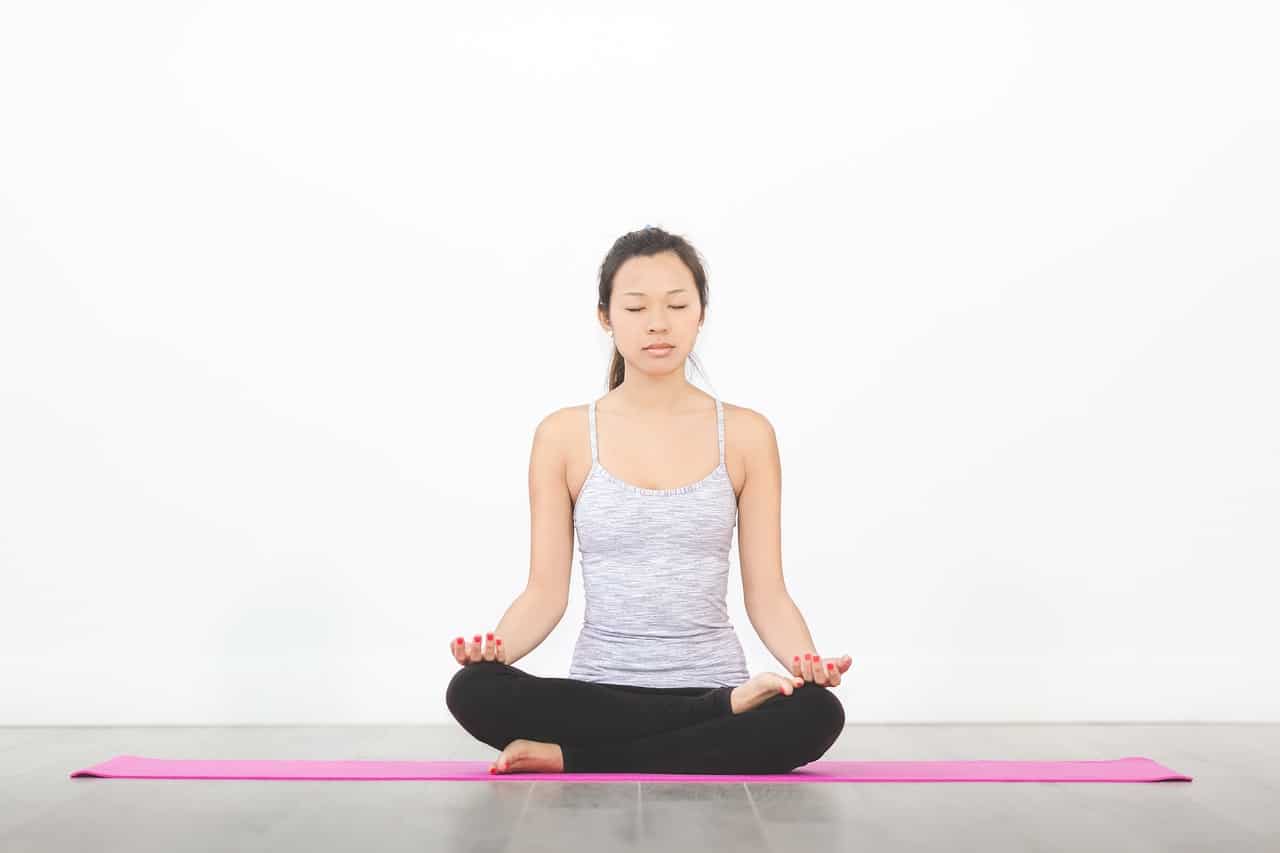
2. Use Deep Breathing to Relieve Your Anxiety
Seldom do we consider our breathing. It’s simply there, working silently in the background, offering you with life each time you require it. Breathing can be about so much more than simply keeping you alive. Those breaths entering and leaving your body can substantially affect stress and anxiety levels in a good way.
Deep breathing– likewise referred to as diaphragmatic breathing– is an ability that we all have and can easily learn to accomplish. It enables you to manage the quantity of air streaming into your body. Hence, you relieve anxiety, enhance your focus, and lower your levels of discomfort.
Are you ready to offer it a shot?
How Deep Breathing Can Ease Your Anxiety
According to scientific neuropsychologist, Kristoffer Rhoads, “When you’re nervous or stressed out, your breathing tends to be irregular and shallow … that makes it difficult to get more air in.”
We normally describe this as hyperventilation. You’ve most likely seen this on television or even in real life where the person who is hyperventilating is told to breathe into a paper bag. It’s a coping system that assists them in decreasing their breathing to relax their nerves.
It got researchers believing that purposeful deep breathing can be practiced to accomplish the same effect. Rather of having them breathe into a bag when they’re feeling stressed out, individuals can find out how to take slow, purposeful breaths from their diaphragm. Here’s something you might not know – babies already know instinctively to breathe deeply and engage their diaphragms. Even more fascinating, you normally utilize diaphragmatic, or belly breathing when you’re sleeping, specifically throughout the more relaxed stages of the sleep cycle
Triggering Your Parasympathetic Nervous System
When the lungs broaden and expand drastically, as in belly breathing, the brain gets greater oxygen levels. In turn, the nerve system gets a signal from the brain to relax. How does it do that precisely?
To address that, we need to begin at the start. The nerve system includes 2 main parts: the main or central nervous system (CNS) and the peripheral nervous system (PNS).
We’re focusing more on the latter.
The PNS is accountable for 2 significant jobs: uncontrolled and voluntary actions. All our uncontrolled functions, like food digestion, heart rate, and routine breathing, are managed by our autonomic nervous system. This part of our nerve system manages the fight-or-flight reaction through the sympathetic nervous system. It gets the body all set for dangerous or difficult scenarios.
To counter that sense of agitation and anxiety, we have the parasympathetic nerve system. It tries to lower stress levels and relaxes our nerves by indicating a rest-and-relax reaction. Research studies reveal that you can enhance and control this system with practice. That way, you can get a better handle on your anxiety and stress levels when feeling overloaded or out of control.
Deep breathing is unquestionably among the quickest and most reliable methods to do that. It’s not the only one however, so here are some of more common stress reduction options to deep breathing.
– Mild workouts.
– Yoga.
– Mindful meditation
– Walks in Nature.
– Running your finger over your lips
– Count 1 to 20.
– Imagine being in your happiest location – by the way, for me, that’s Disney World 🙂
Deep Breathing Exercises
The American Institute of Stress suggests beginning with 5 minutes of deep breathing 3 to 4 times a week. Slowly increase the time to 10 to 20 minutes each day.
If you feel comfy as you get much better at it, you can do it a number of times a day. Some individuals do their deep breathing works out up to 4 or 5 times a day.
Here’s how to do it:.
1. Sit or rest in a peaceful location where you feel comfy and calm.
2. Locate one hand on your diaphragm below the ribcage and the other on your upper chest.
3. Let your muscles unwind.
4. Gradually take in a long breath through your nose. Feel your tummy increase as the air streams inward.
5. Count from 1 to 5 as you breathe in.
6. Do not stress if you can’t reach 5 at. Just keep practicing and you’ll eventually be able to.
7. Take your time breathing out through your mouth. One option is to count from 1 to 5 as you exhale.
8. As you breathe out, you should feel your chest drop downward.
9. Repeat for as much as 5 minutes. Again, start slowly with short duration and build up to longer ones.
10. Keep adding one extra minute to your deep breathing workout each week until you get to between 20 to 30 minutes.
In summary, slow, deep breathing is an excellent method to relieve anxiety and handle stress levels. The very best thing about this is you can do it at any time throughout your day. No matter what the situation – say if you get cut off in traffic, or your boss is taking credit for your hard – just simply escape by taking a number of belly breaths (or call them diaphragmatic breaths if you like that fancy medical term better).
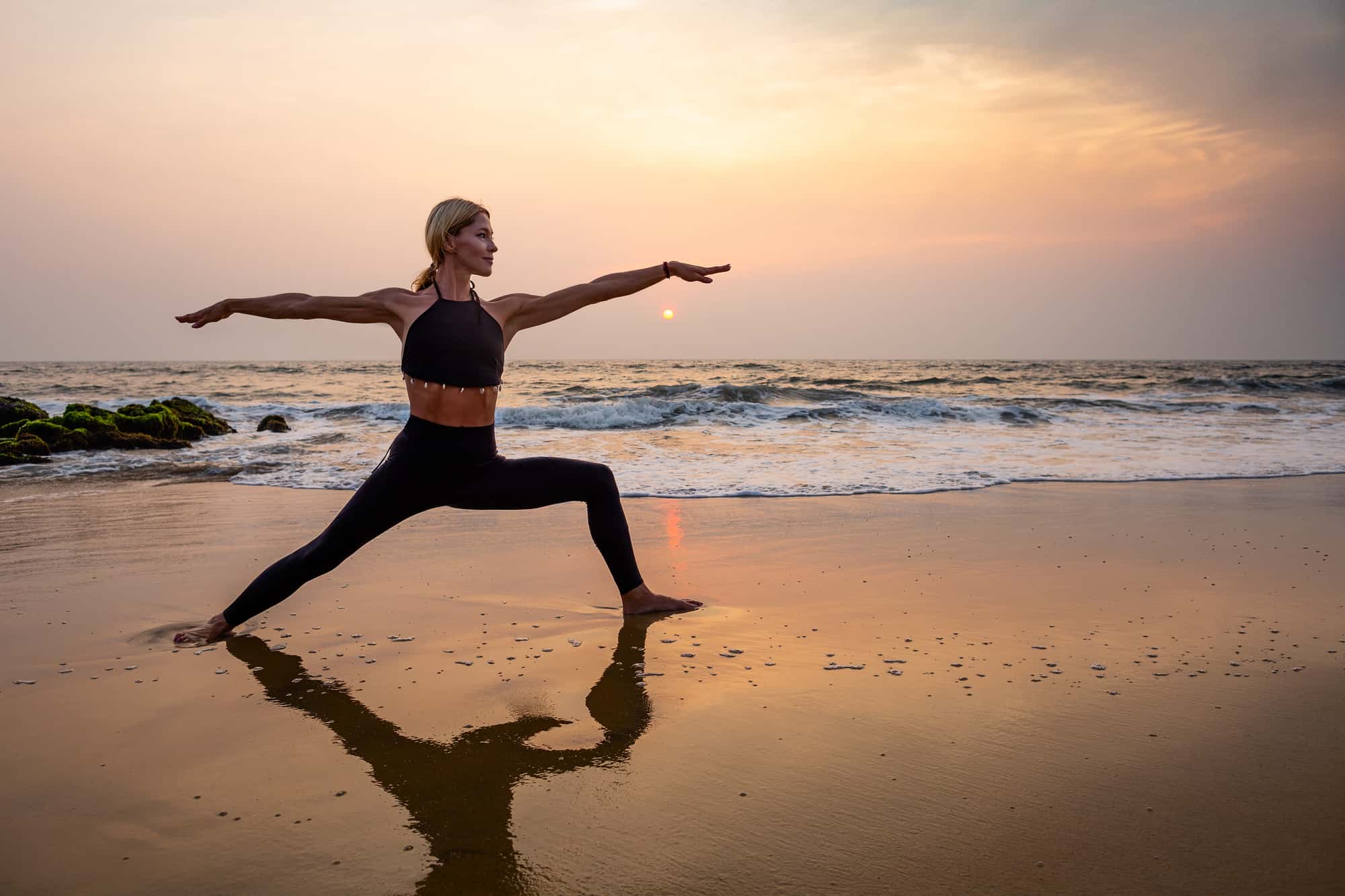
3. Exercise and Yoga
Working out is one of the finest things you can do to bring back sensations of calm and inner peace when you feel anxious or stressed out. When doing a yoga session, you can concentrate on deep breathing, releasing negative energy, and enhancing your state of mind. So, in this section we’ll discuss the advantages of workout and yoga for your general health, and we’ll also let you in on a few of our preferred anxiety-busting yoga positions.
Advantages of Exercise and Yoga for Easing Anxiety
If you’re trying to find one kind of workout that has everything, you can find it in yoga! Having started over 5 thousand years earlier in India, yoga is – at its core – focused on discovering inner peace. It includes different poses that assistance in stabilizing the spirit, mind, and body.
How does it do that? For one, yoga integrates meditation, relaxation, focused breathing, along with extending and conditioning your muscles. Many individuals rely on yoga as mental and psychological training that exceeds just doing workouts alone. Since the various positions are developed to release the body from negative energy, specialists frequently suggest yoga for those suffering from anxiety conditions. Hence, body and mind can realign together, efficiently relieving anxiety and stress.
Research studies reveal that it simply takes a couple of minutes a day to gain yoga’s advantages. You can even take it to another level by integrating yoga sessions with cardiovascular workouts, like running, biking, or strength training. Working out outdoors is likewise a terrific incentive and does marvels for your state of mind! All these aspects integrate together to play a considerable function in lowering levels of stress and anxiety.
5 Common Yoga Poses to Ease Your Anxiety
Yoga isn’t only about the different poses, or asanas. It’s about truly concentrating on the experiences of each movement and the feelings that develop for you to experience with each one. With that in mide, here are five of the most comment yoga poses to help with anxiety.
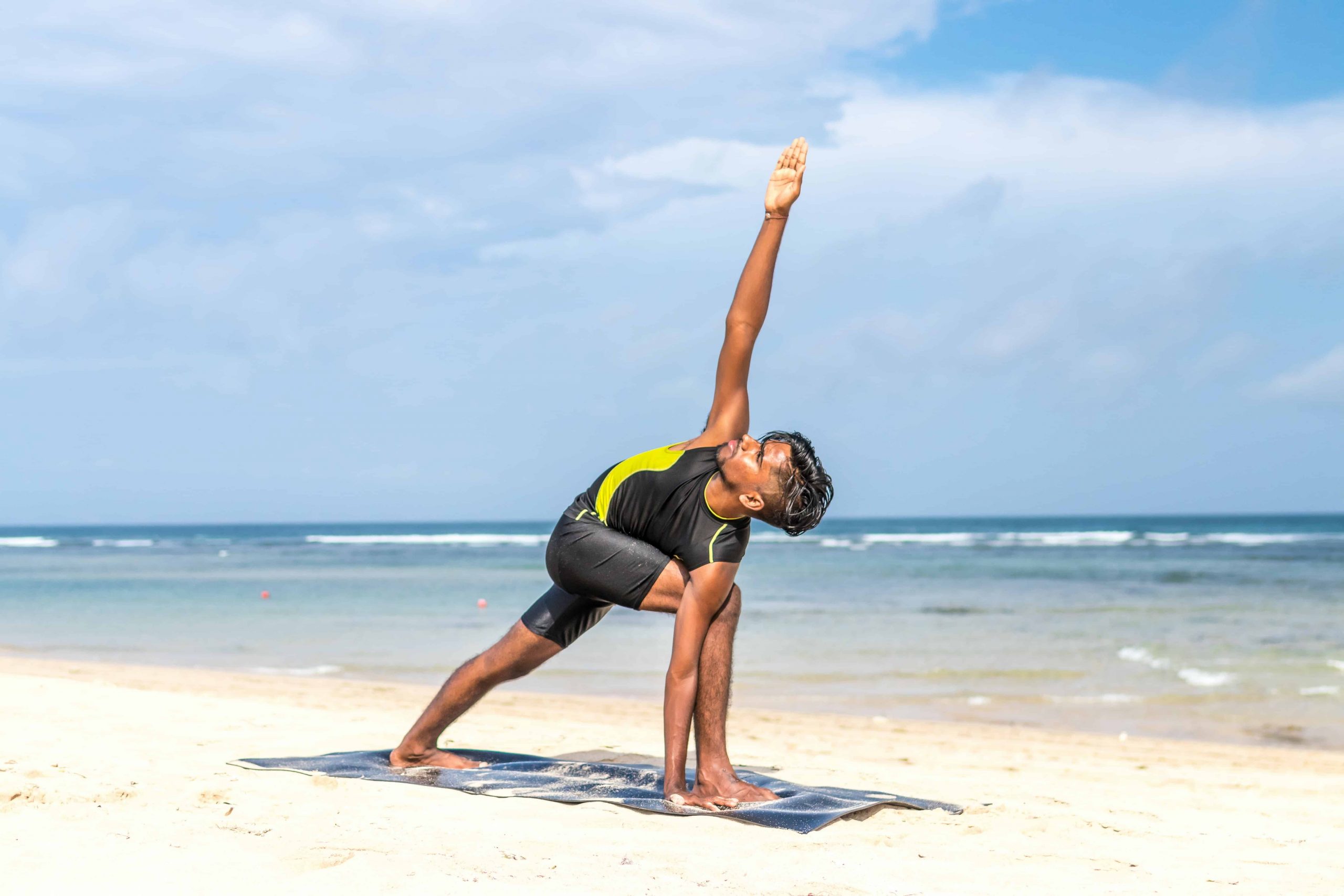
Triangle Pose
The triangle position focus on alleviating stress in the muscles of your upper body, your shoulders, and neck. But it is also used to stimulate your mind and body.
Here’s how to do it:
- Stand with your feet just a little wider than your hips.
- Tilt your right toes up at an angle and keep your left toes pointing forward.
- Reach forward with your left hand, extend your body forward and bend your body at the waist.
- Extend your right arm up towards the ceiling.
- Hold for approximately a minute and then do the same thing on the other side.

Tree Pose
The tree is a traditional yoga pose. It give you a sense of inner calm while organizing your thoughts.
Here’s how it’s done:
- Stand with feet apart, knees somewhat bent.
- Take the sole of your right foot and place it on your left leg.
- Depending on what is easiest for you , put it it as high as left thigh, or lower down at the calf, or just at the left ankle.
- Bring your hands to a prayer position in front of your upper body.
- Hold for 1– 2 minutes, then repeat on the other side.
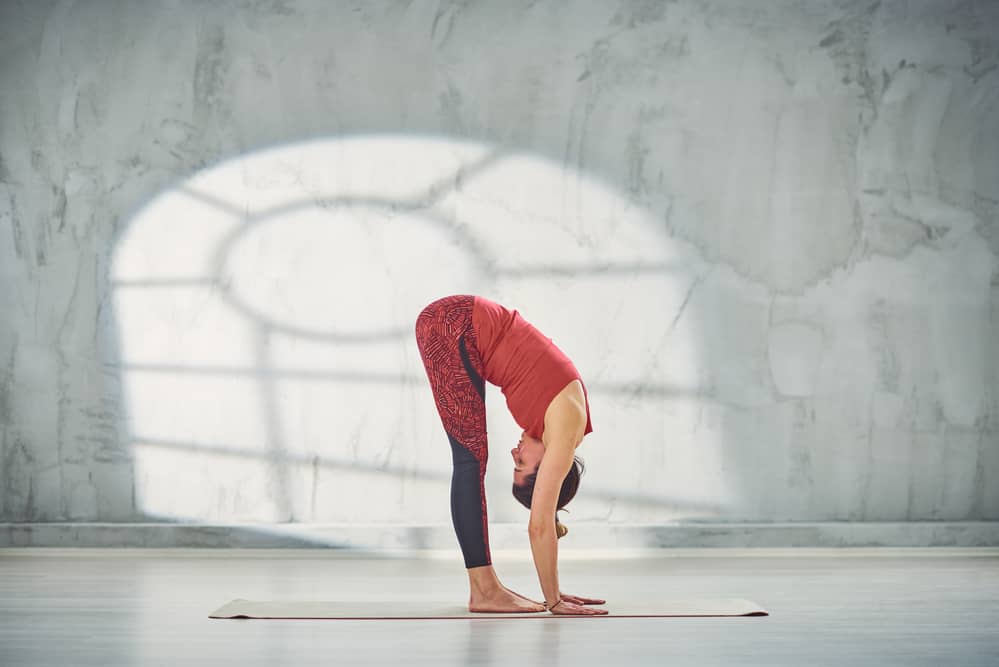
Standing Forward Bend
The standing forward bend soothes your mind as you extend your hips and lower back. It can also assist in the release bottled-up stress in the muscles.
Start by doing the following:
- Stand with your hands on your hips and with your feet hip-width apart.
- While keeping your knees a little bent, gradually lean forward.
- Tuck your chin into your chest as you breathe out.
- Position your hands on the flooring or rest them on a block.
- Hold this posture for approximately 1 minute.
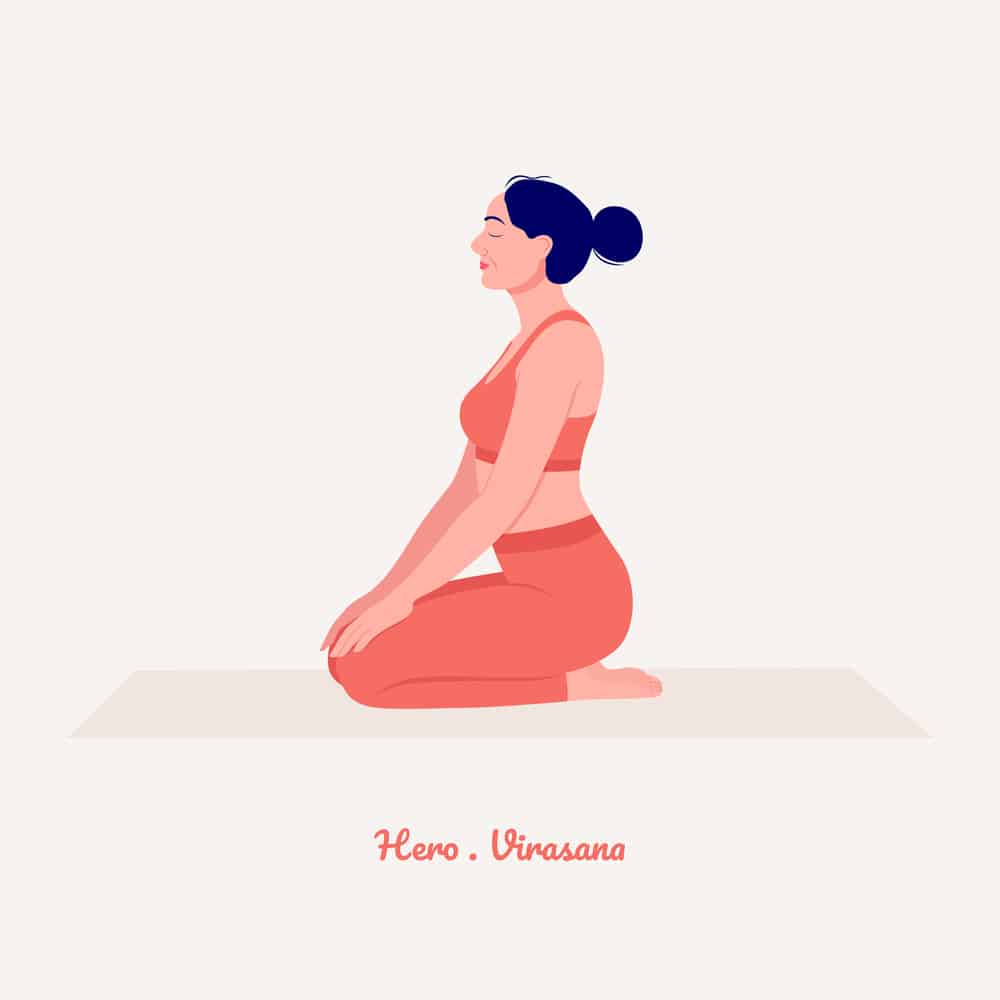
Hero Pose
This posture is among the simplest to do. It can ease your stress by helping you concentrate on your breathing.
For the hero position, do the following:
- Start in a kneeling position with knees together.
- Put the tops of your feet flat on the floor.
- Position a cushion under your calves or buttocks if you feel uncomfortable.
- Next, put your hands on your thighs, sit up as straight as you can and extend your spine.
- Hold for 1 minute. Slowly increase the time up until you can hold it for 5 minutes.

Fish Pose
The fish is a fundamental backbend that can ease any tightness in your back and chest.
Here’s how to do it:
- Take a sitting position on a mat with your legs extended in front of you.
- Position your palms downward underneath under your buttocks.
- Lean back on your elbows and forearms.
- Let your head hang back, or rest is on a cushion.
- Broaden your chest and keep it raised. Hold for approximately 1 minute.
The Bottom Line
Workout and yoga are some of the most common methods to reduce anxiety. They help with uneasiness, reduce anxiety, and can even improve your confidence. Give some of these poses a tryout until you discover what works best for you. The point is to have a good time, keep moving, and remain determined!
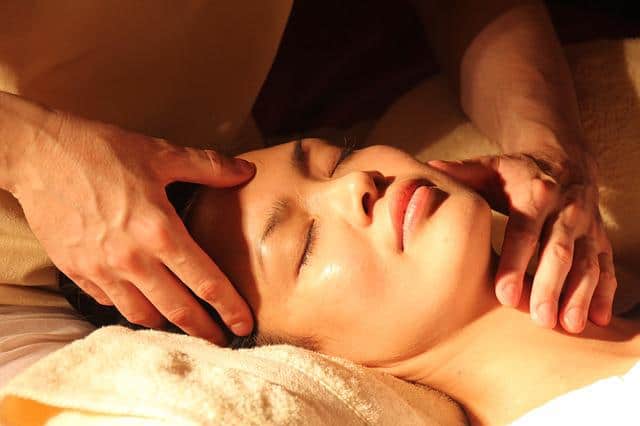
4. Alleviate Your Anxiety With Acupuncture or Acupressure
Over 40 million grownups in the United States alone experience anxiety. It’s typically an outcome of a busy way of life, an overload of duties, and insufficient downtime. (ok, if you’re reading this… you’re probably a grownup)
Anxiety conditions are typically treated with some type of therapy treatment or medications. In some cases, it’s a mix of both.
There are likewise different alternative treatments for alleviating anxiety. One that has been increasing in appeal recently is acupuncture.
For many years, researchers have investigated the impacts of acupuncture to alleviate stress and anxiety. While it’s unclear that there’s a direct link in between the two, there are numerous research studies that reveal it brings relief to those struggling with particular signs of anxiety.
How Can Acupuncture Ease Anxiety?
Scientists still do not understand precisely how acupuncture minimizes anxiety. There have actually been research studies that reveal it affects how our fight-or-flight actions impact our bodies.
Something specialists understand for sure is that it’s a feasible and safe choice. Even if you’ve reacted well to other treatments, acupuncture can likewise provide an assisting hand. It definitely will not make it even worse if it does not do anything for your anxiety.
How Does Acupuncture Work?
Acupuncture has been around for countless years. The first-ever recorded treatment by means of acupuncture dates to about 100 BCE in The Yellow Emperor’s Classic of Internal Medicine.
It works by promoting pressure points in your body to supply short-lived remedy for a wide variety of conditions and their signs. By using pressure on these points, you promote the central nerve system. Often this pressure is applied by means of ultra-thin needles. Or it can be applied even with your fingers which is often called Acupressure instead of Acupunture.
This pressure launches chemicals into the brain, spinal cord, and muscles. That’s why some specialists suggest it to reduce anxiety and produce overall well-being and emotional health. The very best part is you can do it yourself. Anytime you’re feeling distressed, simply use pressure to any of the 5 acupuncture (accoupressure) points, or acupoints, listed below.
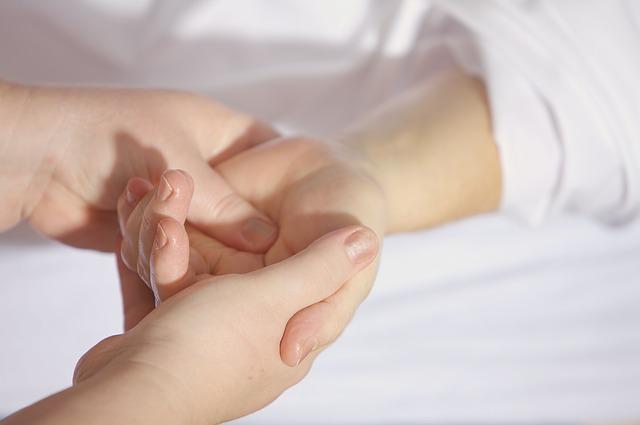
Hall of Impression
Found in between your eyebrows, this point offers nearly instant remedy for stress-related headaches. You can use pressure by yourself by pushing down carefully with your thumb or forefinger in a circular movement.
Shoulder Well
The shoulder well point can assist you in eliminating or reducing headaches, muscle stress, and anxiety. Utilize your thumb and middle finger to pinch your shoulder muscles to find it. Alternate between using firm pressure and rubbing it with your index finger when you discover it.
We need to mention here that using this pressure point can bring on labor. So, you should not use this pressure point if you’re pregnant.
Heavenly Gate
This point lies at the top of the hollow curve of your ear. Promoting the nerves in this area helps in reducing anxiety and even sleeping disorders. Hold the upper shell of your ear with your thumb and forefinger. Utilizing mild pressure, press down in a circular movement.
Great Surge
The terrific rise point is on the top of your feet, near your big toe. To discover it, move your forefinger about an inch listed below where your big toe and 2nd toe intersect.
Next, press down and massage for several seconds. Lift your finger off the point for a couple of seconds, then repeat.
This acupoint is understood to relieve anxiety and even basic discomfort, such as menstrual cramps. It can likewise help in reducing sleeping disorders such as insomnia.
Union Valley
Take a look at that piece of webbed skin in between your thumb and forefinger. That’s where the union valley pressure point is located. To promote it, use pressure with your thumb. Massage it carefully while taking in deep, slow breaths.
You can switch between your hands and see which one brings the best or fastest relief. This point can assist ease neck discomfort, headaches, and minimize stress. Just like the shoulder well acupoint, the union valley can likewise cause labor to start, so don’t use this on if you have a baby on the way.

Do Any Risks Exists for Using Acupuncture?
As we discussed above, acupuncture has very little unfavorable negative effects. The bright side is that you can prevent them if you see a qualified and certified acupuncturist signed up with the state health board. The most typical negative effects are some individuals feel pin punctures throughout their sessions. This should not feel intolerable or agonizing. If at any time it ends up being too uneasy, inform your acupuncturist right away. It’s likewise worth discussing that it’s regular to feel somewhat achy after an acupuncture session. It’s safe and normally goes away on its own after just a couple of hours. And, as we’ve also mentioned, there are several acupuncture techniques that should be avoided by those who are pregnant.
The Bottom Line
Utilizing acupuncture to reduce anxiety is reliable and low risk. Try to find a certified acupuncturist in your area and give it a try. Keep in mind that this natural medicine isn’t a replacement for medical treatments recommended to you by your medical professional. Whether it’s medication or treatment, they must go together with acupuncture.

5. Talk with Someone
Anxiety can be a frequent companion in our lives. And sometimes that’s Ok. If you ever feel anxious or nervous prior to a test or a discussion at work, that’s very normal. Healthy, in fact. These feelings are there to help you stay focused on the benefit or reward that comes from doing the activity. Without them, we ‘d have no motivation for doing anything beneficial.
Simply put, anxiety benefits you when it’s in small amounts. When it’s moderated. Why? Because once the reason for these feelings goes away, so does the anxiety.
On the other hand, feeling distressed all the time includes more than simply short-lived worry or anxiousness. If left unattended, it does not go away and can even get worse over time.
And once it starts being obstructive during your everyday activities, relationships, and work, then you might have what the professionals describe as an anxiety disorder.
Who Can I Talk to About My Anxiety Disorder?
The primary step is to acknowledge you have an anxiety condition. It might feel lonesome and frightening at the beginning. But just remember that many people are going through the very same thing you’re going through. In fact, it’s approximated that hundreds of millions of individuals worldwide are presently living with anxiety disorder or have struggled with it at some point in their lives.
That’s a quite incredible figure. And it might amaze you to find out that even know some of them personally. They could be coworkers, pals, and even close member of the family.
The only way that you can stop feeling so alone with this disorder and begin to better understand what is happening is to talk to somebody.
Confidential Helplines
In the beginning, much of us feel that connecting and discussing our problem is frightening. One option to make this process easier is to use a confidential helpline and talk to a stranger. Among the very best things they provide is something called a warmline. These were developed to provide anybody who requires venting the assistance they require. It’s 100% complimentary and there is no charge.
If you don’t want to , you don’t even have to talk. They likewise provide online assistance and text lines where you can simply make a text of whatever you wish to say and they’ll supply feedback.
These confidential support group are run by volunteers or staff members who know the struggles that you might be going through. They have just one task: to listen objectively and without judgment.
They’re trained to provide unbiased observations and responses in order to assist you in resolving your anxiety.
Peer Support Groups
Another method to meet others going through comparable experiences, emotions and feelings are support groups. These groups get together either on line or face to face to assist each other manage the everyday battles and struggles with anxiety.
The best thing about these groups is that they share coping methods. So you can find those that work for you. And even without all of that, it just feels good to be part of a group of individuals with matching likes and dislikes. You can use them as a sounding board and get guidance and support. Having that sense of assistance makes all your work and effort more significant.
Therapists
Therapists make it safe and available to open about your mental health and your struggle with anxiety. As a result, they can assist you discover much healthier habits, practices, and believed patterns to minimize your anxiety. And in the process, you’ll get a much better understanding of yourself and others.
If you’re still in school, counselors can provide a good way to start. Since they are there with you in school, that means they understand part of what you’re going through. And they provide total privacy so you can feel you’re in a safe area to open up and discuss your feelings.
It’s crucial to remember that it’s completely natural to clam up the very first time you speak with a therapist. Discussing your emotions and feelings can be challenging, however with time, it ends up being easier. Keep in mind that you’re doing this for your own health. While you might be not sure of what you need to talk about at first, you’ll end up being more comfy opening up to a therapist.
Friends
It can be a terrific relief to speak with encouraging pals. They’ll understand something is up and have a sense of what you’re feeling anyhow if they’re close to you.
In addition to your close friends, you can also open up to instructors, coaches, or spiritual leaders in your neighborhood. They might also be willing to provide sound guidance to assist you in handling your anxiety.
Family
When you require somebody to talk to, Family members appear to be the best option. Often, though, we feel they’re the hardest individuals to open up to.
We have a fear they’ll evaluate, judge or change how they see us or feel about us. That just adds to the anxiety. But when you really think about it, your family members can often offer the best type of support. After all, they’re the ones who know us best.
Talking to somebody is a great way to being getting help to alleviate your anxiety. You’ll get a fresh point of view on what you’re going through. Plus, you may get a couple of useful pieces of advice that really work. Whether that guidance originates from an expert, a peer group, or your buddy, it’s a great way to face your worries and return to living a healthy, healthy life!

6. Seek Out Support Groups
When you’re dealing with stress and anxiety, you can feel like you’re all alone, and that nobody knows or cares what you’re going through or how you are feeling. In this case, one of your best tools is support groups.
They’re essentially a safe environment where you can be yourself, and share your emotions and feelings with others who know exactly what you’re dealing with, because they are going through the same thing. Sharing and revealing your feelings without worry of being criticized is one of the best reasons to consider signing up.
Below are other ways to reduce your anxiety through the help of a support group.
What to Look for in an Anxiety Support Group
According to the Anxiety and Depression Association of America,, anxiety conditions impact almost 40 million people each year. Unfortunately, that number is increasing as a result of our chaotic way we live our lives. Not to mention pandemics, wars and other things in our personal lives that’s made anxiety much more common among all of us.
But thanks to technology, looking for assistance and help is much easier and far more available. You can be sitting in the comfort of your own home and right from there be able to get the help you need. It’s so convenience, that it’s hard not to try it. You can find anything from local or regionally licensed or certified experts via the Internet to uncovering online anxiety support systems, all fast and simple.
However, prior to beginning your search, here are a couple of things to remember when selecting the very best support option for you.
How Are Support Groups Moderated?
Support can be provided in-person or online. It can come in the form of audio or video calls. Some take place in virtual chatrooms or in a group discussion environment via an online forum where everybody can share their viewpoints, thoughts and feeling.
You can talk with the trainer or administrator individually if you choose. Or you can take part in a group and simply listen without sharing. Then, you can jump in and become part of the conversation when you feel ready.
Where Can I Find a Group Near Me?
It’s much simpler to link with other individuals with comparable interests and views as yourself if it’s an online group. They could be anywhere in the world, all that’s needed is a Wi-Fi connection and some device like a phone or computer to access the internet.
When you’re looking for in-person groups, this can get a bit more complex. But, on the other hand, research studies have revealed that engaging with individuals in person face to face will help make us less stressed and more resilient to our anxiety.
That said, it can be difficult trying to find a compatible local support group near where you live. One way to help find it is to ask your physician to suggest one. Another alternative is to browse online for support groups near where you live. Go through them one by one till you discover the group you feel most comfy participating in.
Who Guides the Sessions?
Online and in-person group sessions are normally led by certified specialists or experienced trainers. Often they’re led by caring neighborhood leaders, like a church leader, school authorities, or a regional entrepreneur.
Just how much Does a Session Cost?
Most of support system are totally free, whether online or in-person. But there are some online support groups that do charge a little charge. Those charges usually cover their costs for website setup and maintenance as well as being able to provide support 24 hours a day.
How You Can Benefit from Support Groups
Typically support groups will include anywhere from 5 to 15 individuals. And the reason they are there is the same reason you are, so they have similar worries and concerns as you.
This group comes together to hold regular meetings which are typically once a week. As soon as an attendees feels ready, they are encouraged to share what’s going on in their world; their feelings and emotions, in addition to helping others in the group.
Here are a few advantages of participating in a support group:
- Reduced anxiety, distress, and depression
- Allows you to show more compassion and empathy with others
- Encourages you to be more disciplined, since you need to stay with the treatment strategy
- Feeling like you are being heard helps to minimizes feelings of seclusion and isolation
- Listening to other share their stories offers you a wider perspective on your life
- Gives you a sense of empowerment and hopefulness
- Sharing with others often will lower your emotional and mental fatigue
- Motivates you to be less scared about opening up to others about how you feel
The decision to join a support group can be a difficult one. But it’s a vital step towards alleviating anxiety and finding harmony in your life.
It’s worth noting here that these groups do not take the place of medication or therapy. They’re merely a method of helping you realize that you’re not alone in your struggle.
Being aware that there are people who “get” how you feel can be an major motivator. As a group, you can give each other the help and support that you need to reduce your anxiety and lead happy, healthy lives.

7. The 5-4-3-2-1 Coping Method
Whether it’s being fearful of an approaching job interview, public speaking, or simply the everyday chaos that seems to be constant– these are all normal stressors that we have all experienced at one point or another in our lives. Even the calmest Buddhist monk isn’t unsusceptible to circumstances that stimulate on stress, anxiety, and uneasiness.
Fortunate for us, the anxiety experts have created a grounding technique to assist us getting back our composure throughout an anxiety attack. It’s called the 5-4-3-2-1 coping strategy. With these 5 simple steps, you can develop a sense of balance and peacefulness. Plus, it’s an excellent method to help you get back some of the control that you lose when you are feeling stressed out.
How to Use the 5-4-3-2-1 Technique to Ease Your Anxiety
How does this coping method work? In theory, it’s very comparable to mindfulness meditation because it helps you be in an concentrate on the present moment.
The objective of this strategy is to rally your senses to help improve emotional health. This activity will signal to the brain that you’re not at any risk. That, in turn, will trigger your parasympathetic nervous system to decrease your heart rate and gain back composure.
Prior to beginning, keep in mind to make your breaths slow and long. Deep breathing will bring you to a calmer state and enhance your focus.
Now, you’re all set to begin with the grounding method. Here’s how:
5: Find FIVE Things You Can See
Take a look around you and identify 5 things you can see. This could be an area on the ceiling, an electrical gadget, and even a pen and paper.
They don’t have to be just the things you can see inside your home. Take a look out of your windows and see what you can find. Possibly there’s a bird sitting on a tree branch or maybe a plant or tree in your field of vision.
Pretty soon, you’ll end up being so immersed in the large variety of things you can focus on that you’ll forget everything about your anxiety. Or, at a minimum, you’ll relax a bit and think things through more clearly.
4: Find FOUR Things You Can Touch
Now, you’re going to concentrate on things that are close enough for you to touch. Discover 4 things within arm’s length and touch them, such as things that might be on your desk.
Don’t just simply touch them. Rather, take the time to truly see how each product feels in your hand. Is it smooth, cold, hot, or rough around the edges?
3: Find THREE Things You Can Hear
This sounds easy (pardon the pun) but this can be pretty difficult. To start, try to concentrate on external sounds around you. The point is to reroute your focus from the thoughts going on in your head to these ambient noises and sounds to get your mind to cool down and unwind.
There might be a clock ticking someplace close-by or the barking of a dog. Other examples might be the sound of cars or motorcycles going by. If you are at the office, maybe you can focus on the noise of keyboards clicking away in the distance. There are also the far-off ringing of phones or people talking.
2: Find TWO Things You Can Smell
This doesn’t need to be a unique odor. It can be merely the fundamental smell of whatever may be around you at the time. If you can go someplace with a unique odor, like your restroom or kitchen area, then give that a try. The fragrance of your hair shampoo or soap bar can calm you down and soothe your nerves.
If you’re a coffer lover (like I am) you can open a bag of coffee and take a whiff. The scent of newly ground coffee beans will instantly decrease your stress and lower your heart rate (that is, if you enjoy coffee! If not, then maybe try some aromatic teas you have).
1: Find ONE Thing You Can Taste
If you thought the find things to hear was tough, then take this one on. When you’re upset and nervous, it’s not always simple to discover something to taste. And even if you do, you’re most likely not going to be in the right state of mind. Nonetheless, try to find something you can focus your taste buds on.
Focus on the inside of your mouth. What does that taste like? If you have some of the coffee we discussed above, then perhaps you taste coffee. It could also be the chips you had at lunch, or even spearmint gum you were chewing an hour before. By the way, it does not simply need to be something you can swallow. It could be tooth paste or mouth wash.
Final Step
Take one last deep breath, and you’re done! You can constantly duplicate these 5 steps in order as often as you need to until you’re feeling more relaxed and calmer.
The 5-4-3-2-1 coping strategy is among the many choices you can turn to whenever you’re feeling overwhelmed. It’s simple, fast, and available to you anytime and anywhere. The next time you’re feeling stressed out, give this coping technique a try to reduce your anxiety. It’ll assist you gain focus and clarity and provide you with a sense of inner peace.

Conclusion – Have It YOUR Way
We all have anxiety, to one degree or another. Many times it’s just a short lived episode that we recover from quickly. Other times though, it can bring us to our knees.
If you feel that your anxiety is starting to impact your life, it’s up to you to choose how to respond. So have it your way; either choose to curl up in a corner, or decide to take back some contro.
Once you’ve decided to ease you anxiety, it’s also your choice on how to do it. All of these seven options can be helpful but you can do one, or some, or all of them. Again, have in your way.
However, if you’re really struggling with anxiety PLEASE seek professional help or advice. None of these methods above is a replacement for that.
And if you’re in a crisis, know that help is just a text message away. Text HOME to 741741 to reach a volunteer Crisis Counselor
More From This Category
Affirmations as One of the Methods of Managing Stress
Of all the methods for managing stress, using affirmations can be a one of the most powerful. In this Post we'll talk about using Affirmations as one of many methods of managing stress. We'll dig into the what, why, when and where of Affirmations, and also uncover the...
Living in the Present Moment: Mindful Methods of Managing Stress
Stress can be caused by a variety of factors such as work, relationships, financial issues, and health problems. However, one of the many effective methods for managing stress is by living in the present moment.This post will explore why living in the present moment...


0 Comments